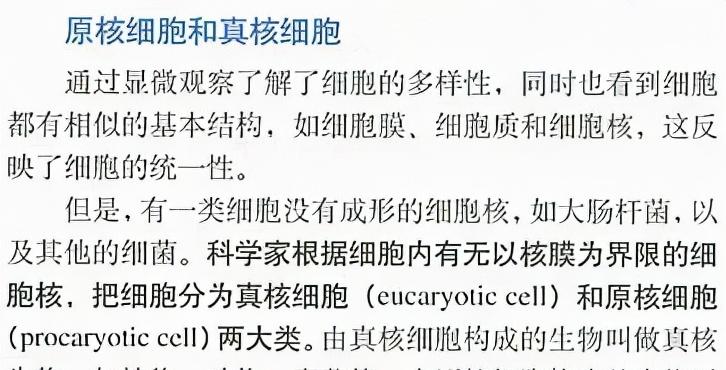When I was a junior high school student, I knew that organisms are divided into animals, plants, and microorganisms, and that species are divided according to species of the genus Phylum
When I was in high school biology, I was exposed to the concepts of eukaryotes and prokaryotes, as well as the concept of protists, and also learned that in addition to our common animals, plants, and bacteria, there are also mycoplasma, chlamydia, which are inexplicably cellular organisms.
Or viruses, which are suspected to be biological or not. At present, I still think that viruses are biological, but whether this thing is biological or not is indeed controversial. At least, it's not a cell organism
At the same time, there is the more inexplicable thing of prions...

Screenshot from Human-Taught Edition High School Biology Book Compulsory One (Molecules and Cells)
In college, I only studied biochemistry, and I did not dabble in biology, especially classification. When I was in my first year, I took a mycology course, which once again opened the door to a new world.
The original division of species, above the boundary, there is also the concept of domain, that is, the classification is actually divided according to the species of the genus Phytopodidae of the domain boundary
01
<h1 class="pgc-h-arrow-right" data-track="16" > rigorous classification tree</h1>
Thanks to the help of the @Neomura (Zhihu) big guy, the more rigorous classification tree (considered by boundary) is shown in the following figure:
https://www.catalogueoflife.org/col/browse/tree?206226b9af98f5dda96511404180ddd9
This website should be the most authoritative website in global taxonomy at present, and the English words are in order from top to bottom:
Animal kingdom
Archaea
Bacterial realm
Pseudo-fungal world (also translated into the color algae world, algae world, protoal algae world, algae world, etc., there seems to be no strict unified translation at present)
Mycosal realm (fungal realm)
Plant kingdom
Protozoa kingdom (pay attention to the distinction with protists ~ I looked at it, it seems that the algae in the original protist world were plucked out into a pseudo-fungal realm)
Virus community
↑This is a classification method that is currently highly recognized by the academic community~
02
<h1 class="pgc-h-arrow-right" data-track="36" > protists are a basket</h1>
The "bacteria" we usually understand basically include two huge taxonomic systems, "archaeal domain" and "bacterial domain".
Animals belong to the animal kingdom in the eukaryotic domain;
Plants belong to the plant kingdom in the eukaryotic domain;
Mushrooms, fungus, yeast, mold, etc. all belong to the fungal realm (fungal realm), which is neither an animal nor a plant.
"The mushrooms you eat and the athlete's foot are relatives" – Sam
(Also: fungi (fungi) were indeed classified as plants, but times have changed, and they are really not at all different from bacteria...) )
As for the protist world, it is a variety of other eukaryotes that are not convenient to divide, such as "flagellar", "eye worm", "amoeba" and so on, which you may have heard... In a word:
<h1 class="pgc-h-arrow-right" data-track="50" > protists are a basket that can fit anything</h1> into it
Finally, bacteria are neither animals nor plants, and this scientist has long been clear. However, there are still many eukaryotes, and scientists have not yet figured out whether they should be classified as animals or plants or fungi (fungi).
03
<h1 class="pgc-h-arrow-right" data-track="56" > a multitude of taxonomies</h1>
Taxonomy is actually a very complex discipline. I know a classmate of the Kunming Institute of Botany, that is, engaged in classification-related, their research work is really hard, and it is not like everyone thinks, it is a human body identifier, just give a grass, he can tell you what kind.
Generally speaking, it is very powerful to identify the family; those who can identify the genus at a glance are generally experts in the field, and as for the identification of species, more complex operations are needed
Taxonomy has always been a dynamically changing discipline, with the deepening of molecular genetics research, the kinship between different species is constantly being stripped away, with the continuous discovery of new species, the taxonomic tree is becoming more and more leafy ~ this is why the topic of classification is always controversial.
Therefore, knowledge must be verified and revised frequently, especially from others.
"To learn without thinking is to be reckless, and to think without learning is to perish."
Author:@Xiaofei (Institute of Physics and Chemistry, Chinese Academy of Sciences)
Reprinted with the author's authorization, slight additions or subtractions from the original text